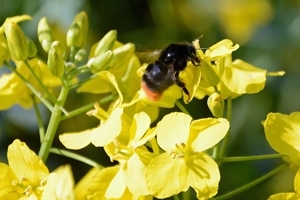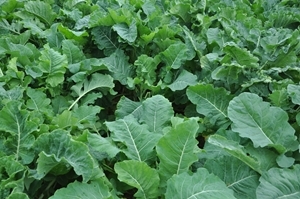 The response of some conservation NGOs to the news that Defra has given emergency authorisation of a neonicotinoid seed treatment for sugar beet in 2021 has been scare-mongering and emotive. In our view Defra’s decision is proportionate – and here is why.
The response of some conservation NGOs to the news that Defra has given emergency authorisation of a neonicotinoid seed treatment for sugar beet in 2021 has been scare-mongering and emotive. In our view Defra’s decision is proportionate – and here is why.
There is evidence that the widespread use of neonicotinoids has affected bee populations, both through increased mortality and affecting behaviour patterns, besides impacting on non-target species through leaching into watercourses and their persistence in the environment generally (see our position statement and briefing). Their use was widespread due to their application as a seed treatment, reducing the need for farmers to use sprays at crop establishment and emergence, across a range of crop types. In 2008 around 80% of insecticide-coated seeds sold worldwide were coated with neonics.
For some crops, such as sugar beet, their use as a seed dressing is critical to allow successful crop establishment; beet is precision sown, and achieving an optimum plant population is a key requirement to maximising yield and thereby resource use efficiency. In cereals this is less important since plant density only affects yields at very low populations and pests are not generally a serious problem early in the growing cycle.
The total ban on their use, therefore, is a blunt instrument that fails to acknowledge their value in the cultivation of some crops: sugar beet is one and kale, widely used in wildlife seed mixes, is another.
Unlike oilseed rape, which is now proving impossible to grow in some areas – replaced, perhaps, by palm oil grown on land cleared from rainforest – sugar beet doesn’t flower as part of its cropping cycle and therefore the risk of insects and bees being exposed to the neonicotinoid via its pollen is nil. Although secondary impacts can occur via leaching and absorption into field margins or flowering weeds growing in the crop, this can be minimised through appropriate usage guidance. But the impacts of aphid infestation and, more importantly, the virus they transmit means that the seed treatment provides significant protection to the crop.
Given that crop losses greatly increase the carbon footprint of growing the crop, since this remains largely unchanged, estimates of sugar beet yields being reduced by 20-25% is significant, as the carbon footprint will increase substantially. In addition, there will be excess nitrogen left in the soil that has not been taken up by the crop. As sugar beet is harvested in the autumn, with the following crop often not established until the spring, any excess nitrogen will be leached out, negatively impacting on water quality. Defra’s decision, therefore, is an example of where a comparative risk assessment has identified that the use of a neonicotinoid seed treatment for sugar beet is beneficial given its growing habits and the need to protect yields.
 Whilst kale is less widely grown, it is a key component of many wildlife seed mixes. Kale flowers in the second year after sowing, so if the seed is protected with a seed coating it is unlikely to persist long enough to be transferred to bees and other insects at flowering. GWCT research has shown that kale seed is “the king of wildlife crops”, especially if it is left into a second year. It provides warm cover, is very hardy, and produces stacks of small seeds that many birds love to eat. However, without the protection from flea beetle devastation that a neonic seed coating provides, it is difficult to establish. We would argue, therefore, that Defra should consider allowing a derogation for its establishment too.
Whilst kale is less widely grown, it is a key component of many wildlife seed mixes. Kale flowers in the second year after sowing, so if the seed is protected with a seed coating it is unlikely to persist long enough to be transferred to bees and other insects at flowering. GWCT research has shown that kale seed is “the king of wildlife crops”, especially if it is left into a second year. It provides warm cover, is very hardy, and produces stacks of small seeds that many birds love to eat. However, without the protection from flea beetle devastation that a neonic seed coating provides, it is difficult to establish. We would argue, therefore, that Defra should consider allowing a derogation for its establishment too.
However, in our view, as a blanket ban on pesticides such as neonicotinoids can have unintended consequences, such as farmers seeking alternatives or changing their cropping, behaviour change is more appropriate to ensure a pragmatic and balanced approach to their use. The Voluntary Initiative was set up to encourage partnership between government, farmers, NGOs and the manufacturers and distributors of crop protection products. Given that chemical regulations are now back under domestic control and there is a perceptible change in the mood of the industry to embrace further sustainable crop production methods, now is the time for government to use the Voluntary Initiative to change farmer behaviour and to marry the need to support domestic production whilst encouraging alternative solutions to minimising their overall environmental impacts.